There are a few unwritten rules and principles for camping, the main one being “leave no trace”. These rules and principles are meant to foster greater care and respect for outdoor spaces and the environment, as well as your own safety and the well-being of others.
You’ve probably heard of the “golden rule of camping”, but what does it actually mean?
Well, let’s talk about all the unwritten “leave no trace” rules, policies, and principles for camping to make your next adventure spectacular and sustainable!
Article Contents:
The Golden Rule of Camping
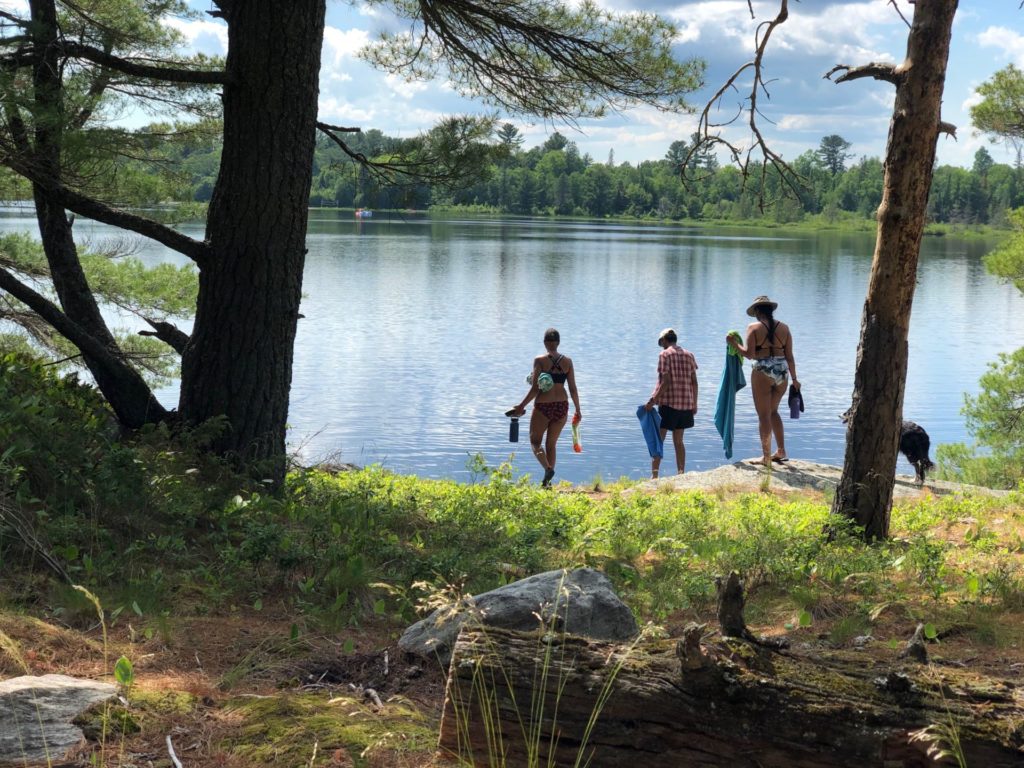
There’s an old adage – “take nothing but photos, leaving nothing but footprints”. For outdoor enthusiasts, this motto is very important to preserving the health and longevity of natural spaces.
It’s so important that it harkens back to a simple but unwritten tenet we all must uphold – the golden rule of camping.
The golden rule of camping states individuals should strive to leave no trace. That means you should camp without adversely affecting the environment, flora and fauna.
- All items packed in must be packed out, including waste.
- The campsite should seem like no one was there in the first place.
The golden rule of camping is primarily meant to ensure sustainability, so that others can enjoy the same spaces and have the same experiences for generations to come.
Peeing and Pooping Outdoors
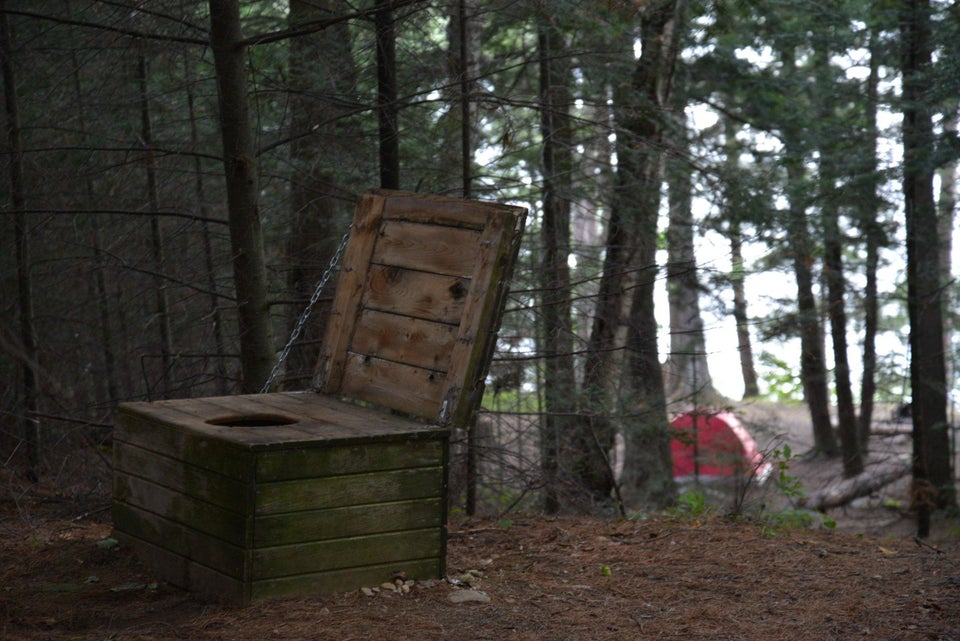
A massive part of leave no trace camping is being mindful of how and where you pee and poo.
Human urine and excrement, if disposed of or treated improperly, can pollute water systems and spread human borne diseases.
In fragile ecosystems or popular areas, this can rapidly lead to the degradation of flora and fauna, as well as create hazards for living beings.
So, the key is to apply proper human waste disposal practices in order to:
- limit the environmental impact
- boost the rate of waste decomposition
Pro-tip: For more in-depth information, check out How to Pee And Poop While Camping? – 3 Most Common Toilet Options.
How to Poop Outdoors
Most parks, campgrounds, and campsites have proper waste facilities – whether they be modern flush toilets, outhouses or backcountry toilets. If these facilities are available, use them!
Whereas, when you are backpacking, hiking or backcountry camping at non-designated sites, there may be instances when there are no “established” toilet facilities nearby.
As a result, this is when you’ll need to adopt the primitive technique of “scoop and poop”, which is more formally known as the “cathole” method.
As the name implies, individuals need to dig a hole, poop into that hole and then cover it up. This method preserves the “leave no trace” mentality when it comes to outdoor recreation.
It’s critical that you follow these 5 steps for pooping in the woods:
- Select a spot at least 50 meters away from any major paths, campsites, and water ways.
- Using a small shovel or stick, dig a hole approximately 6 inches wide and 8 inches deep. Keep the dug soil nearby.
- Pop a squat and poop directly into the hole.
- Only biodegradable toilet paper can be deposited into the hole. Regular toilet paper must be packed out with you.
- Cover the hole with dirt before leaving.
This method allows micro-organisms in the ground to quickly breakdown human waste and redistribute nutrients safely back into the environment.
Pro-tip: In alpine regions, it might be necessary to set up a portable latrine and pack out any excrement, since the ground can be rocky and barren of soil.
How to Pee Outdoors
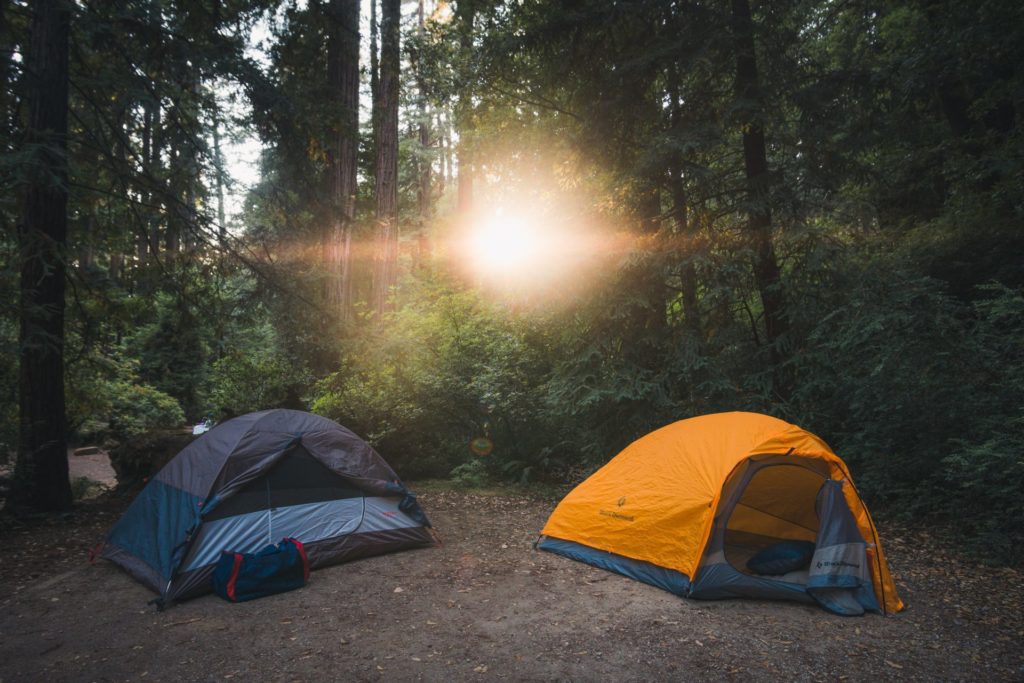
When it comes to urinating in the woods, the rules are a bit more relaxed. So, is it okay to pee in the woods while camping or hiking?
Well, urine is primarily comprised of water, so it can soak into the ground quickly, and urine typically contains less human pathogens.
Despite this, urine also contains salts which animals are attracted to, as well as the molecule urea which breaks down into ammonia causing a pungent smell [Reference].
It’s generally acceptable to pee in the woods and not into a dedicated toilet or cathole.
Nevertheless, it’s best to follow a few guidelines when peeing from a hygienic and contamination perspective:
- Pee at least 50 meters away from bodies of water.
- Do not pee directly on walking trails.
- Do not pee within your campsite area. Alternately, walk into the surrounding area to relieve yourself.
- Try not to pee in the exact same area twice.
- Try to disperse your pee or spray the ground afterwards with water to dilute the concentration.
Pro-tip: Consider keeping a labeled pee bottle in your tent for peeing at night or for winter camping. Then, in the morning, pour out the contents!
Garbage Management
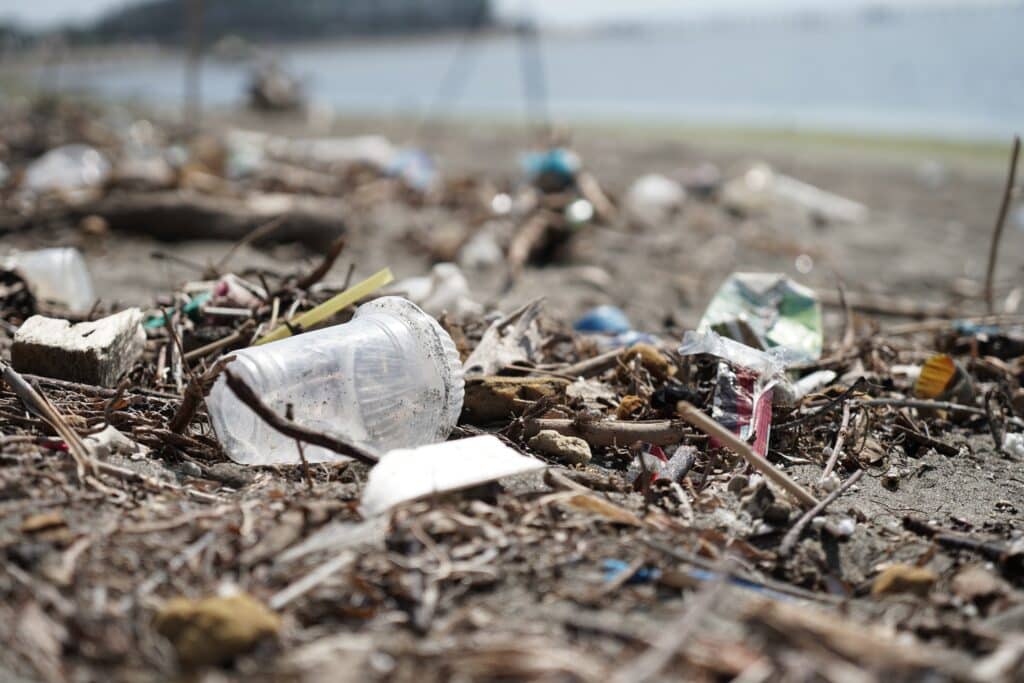
Personally, one of the most disheartening things to see while enjoying the outdoors is garbage. And no matter how remote you are, it seems like you always come across some sort of modern human waste, be it food, paper, plastic, glass, or metal.
And, even the smallest amount of garbage can taint a once pristine area.
Garbage left unmanaged can quickly accumulate, release toxic chemicals, pollute water ways, negatively impact the ecology and take years to properly decompose and breakdown.
Garbage can also attract wildlife, such as bears, raccoons, mice, and insects. This increases your chance of an unwanted encounter and negatively reinforces human-animal interactions.
That’s why it’s so important to leave no trace when it comes to garbage. Everything you pack in must be packed out.
As a society, we need to manage and dispose of garbage correctly. Equally important, to reinforce this rule with all who want to enjoy the outdoors, especially at a young age.
The hope is to educate ourselves and those around us, so that we all do our part in keeping our landscape garbage free!
Here are some tips to reduce garbage while camping:
- Use reusable cutlery and dishes
- Bring reusable water bottles
- Limit the use of plastic bags
- Cook and eat fresh food in lieu of packaged meals
- Get rid of excess packaging at home
- Use rechargeable electronic devices instead of batteries
Campfire Rules
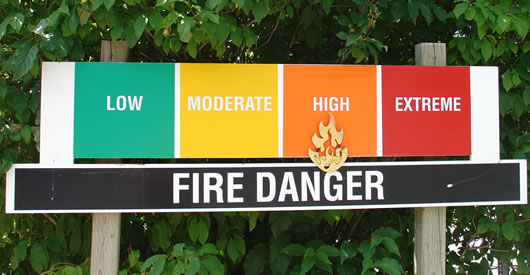
When it comes to campfires, there are many rules both written and unwritten. Most of the rules are safety orientated and meant to keep fires from spreading uncontrollably.
Likewise, some campfire rules are meant to keep animals at bay as well as keep the ecology in balance.
So, here are 5 campfire rules to follow to ensure you leave no trace.
1. Keep Fires Small and Contained
Campfires don’t always have to be a large rager. In fact, they should be small and contained.
A small fire burns through less wood and is a lot more manageable. They also produce less heat and combustion products.
In the event that you’re in a compact campsite, a small fire would be a safer option.
2. No Fires During High Risk Periods
Throughout the year, park rangers try to minimize the risk of wildfires by modifying the fire danger index.
In Canada, the fire danger index is a scale of how easily it would be for a fire to spread to and ignite vegetation, how much it could spread, and how much damage it could do.
The weather has a direct impact on the fire danger index. Extended periods of hot, dry and windy conditions in grassy and forested areas is a recipe for wildfires.
That’s why it is critical that campers do not make campfires during these higher risk periods.
In Ontario, where I’m from, the penalty for having a fire in a declared restricted fire zone is pretty severe – can include a fine of up to $25,000, 3-months in jail and being financially responsible for firefighting efforts.
Sometimes, it’s better not to have a campfire.
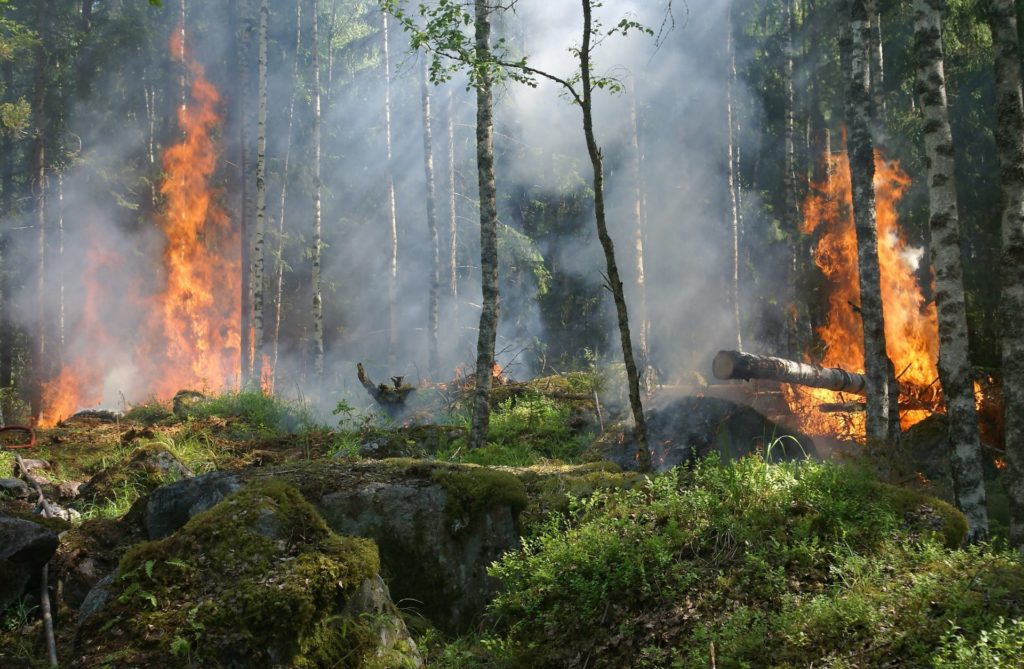
3. Never Leave a Fire Unattended
In North America, one of the leading causes of wildfires are campfires. [Reference] An unattended campfire can grow uncontrollable, or jump from the fire pit to the surrounding area if the wind picks up a burning ember.
And before you know it, you’ll have a human-caused wildfire that can spread and put both the landscape and fellow campers in danger. That’s the complete opposite of leave no trace!
With all of this in mind, the lesson is to never leave a campfire unattended.
- You can remain in your campsite and have a small fire going, just don’t walk away without designating someone to keep an eye on it.
- If you’re alone, ask a neighbor to lookout for you if you have to step away to the bathroom.
- Make sure your fire is small and contained in the fire pit.
- If required, add more rocks or dirt around the fire pit to shield the flames and heat from the surrounding area.
Yes, it’s temping to walk away from a campfire that’s just smouldering embers. But in reality, underneath there can still be hot coals that could re-ignite or get blown onto a dry patch outside the fire pit.
So when you’re ready to leave, you must put out the fire completely. Dousing a fire with plenty of water will snuff out any heat, preventing the coals from re-igniting once dry.
Pro-tip: Try not to add firewood to a campfire unnecessarily. If you know you’re going to be putting it out later, gauge how much firewood you need to add and err on the side of less. Let the fire naturally die down and then put it out with water for good measure.
4. Use Local Firewood Only
You’d think all firewood is the same for a campfire, right? Doesn’t it all just burn anyways, so what’s the difference.
Well, certain species of insects, pests and diseases only exist in specific regions. If you’re cutting and carrying firewood from far away and then introducing it to a new area, you’re facilitating the spread of invasive species.
In short, to limit the spread of invasive species, it’s best practice to use locally sourced firewood from within 50 km of your site.
5. Do Not Burn Garbage
Tossing trash into a campfire seems like the easy, no-waste solution when you are out in the woods. When we burn garbage, it’s no longer a problem, right? Well, not exactly.
The trash turns into a melting, black-smoke producing, heap of garbage that puts off harmful chemicals.
Not only are you breathing in the smoke of a fire, but also the burning of plastics, which can lead to serious illnesses.
Additionally, it’s likely that not all of the trash will burn completely and you will be attracting unwanted pests and critters at night.
The smell of burnt garbage is not very appealing to us, but for any raccoons, bears, foxes or other rodents trying to eat, it’s the smell of dinner.
Interacting with Wildlife
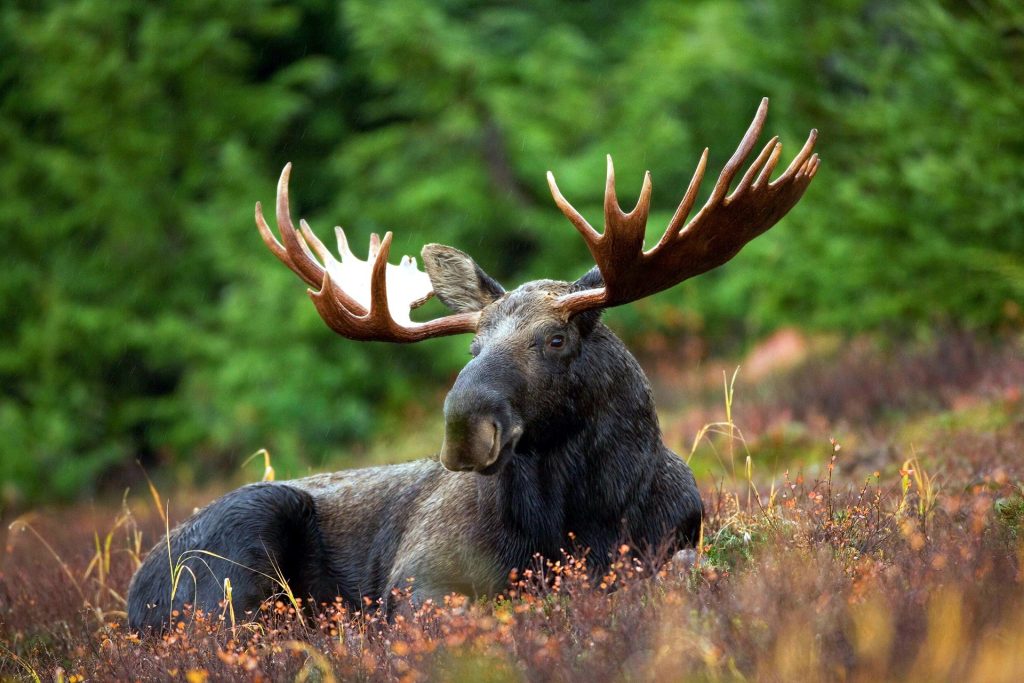
One of the reasons we explore the outdoors is to be closer to nature. And sometimes, we get lucky with a chance encounter with wildlife.
Observing wild animals from a safe distance allows you to appreciate them, while also keeping them from getting spooked or feeling threatened.
Nevertheless, lots of people have the urge to get close to animals, even feeding them to entice them to come closer.
This behaviour is not encouraged for two key reasons:
- Wild animals are unpredictable and can injure you. They can carry diseases, which are dangerous to humans. Not to mention, become a nuisance if they rely too much on human interaction and must then be relocated.
- Human food is generally not meant for wildlife, since they have specific diets. Our food can cause them undue harm and even death. [Reference].
So, please maintain your distance from wildlife. Do not feed wildlife. And, do everything in your power to limit your impact on their ecosystems.
This will ensure you leave no trace when it comes to wildlife, so we can share the same spaces in peace and harmony.
This article contains affiliate links, which help support this blog at no cost to you!
